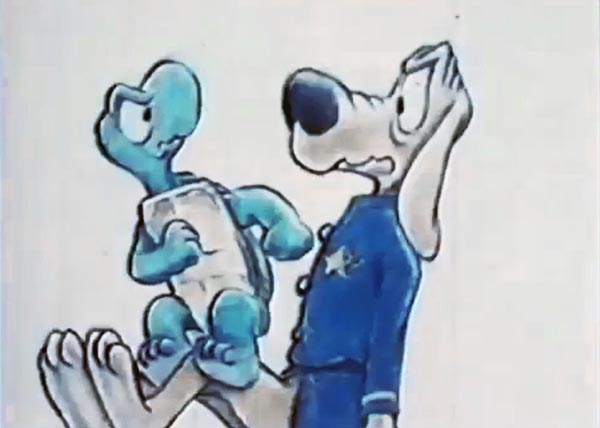

Rediscovering Walt Kelly’s Lost “Pogo” Short

If you want something done right, you have to do it yourself.
Walt Kelly had had a regrettable experience making The Pogo Special Birthday Special (1969) with Chuck Jones.
“How did you ever okay Chuck’s Pogo story?,” Ward Kimball asked Walt Kelly shortly after the special aired on TV. “I didn’t, for Godsake!,” Kelly cried out. “The son of a bitch changed it after our last meeting. That’s not the way I wrote it. He took all the sharpness out of it and put in that sweet, saccharine stuff that Chuck Jones always thinks is Disney, but isn’t.” Kimball, who was dining with Kelly at the Musso & Frank Grill in Hollywood, pressed further. “Who okayed giving the little skunk girl a humanized face?” he asked. Kelly was so angry he couldn’t answer. His face turned red, and he bellowed to the waiter, “Bring me another bourbon!” In Kimball’s words, Kelly wanted “to kill—if not sue—Chuck.”
Shortly after that debacle, Walt Kelly took matters into his own hands and decided to personally animate his popular Pogo characters. With the help of his wife Selby Daley, he planned on creating a fully-animated half-hour special for television, with the characters expressing a strong stance on taking care of the environment. But due to his ill-health, he was able to complete only thirteen minutes of We Have Met the Enemy and He Is Us, which you see below.
The finished portions are absolutely charming and beautifully crafted. Much like his character P.T. Bridgeport, Kelly is a real showman here. Although he hadn’t animated since Dumbo thirty years prior, his animation skills are still top-notch. While the animation can be a bit choppy at times (mostly keys and some breakdowns with no in-betweens), his drawings are solid and appealing with some real flourishes of fluid animation throughout.
The color, though muddy in the existing prints, also appears to be as vibrant as his Sunday pages, and the backgrounds are as intricately detailed as his splash panels, if not more so. And the voices, humorously performed by Kelly himself, fit the tone and mood of his characters.
Besides Winsor McCay, I can’t think of any other mainstream comic artist who animated their comics to such a painstaking degree. While many comic strips have been adapted for film and television before and since, none of them have met or surpassed the charm and quality of the original artist’s work. Here, the animator and the creator is one and the same, and the drawings are pure, unfiltered and straight from the artist’s hand.

.png)